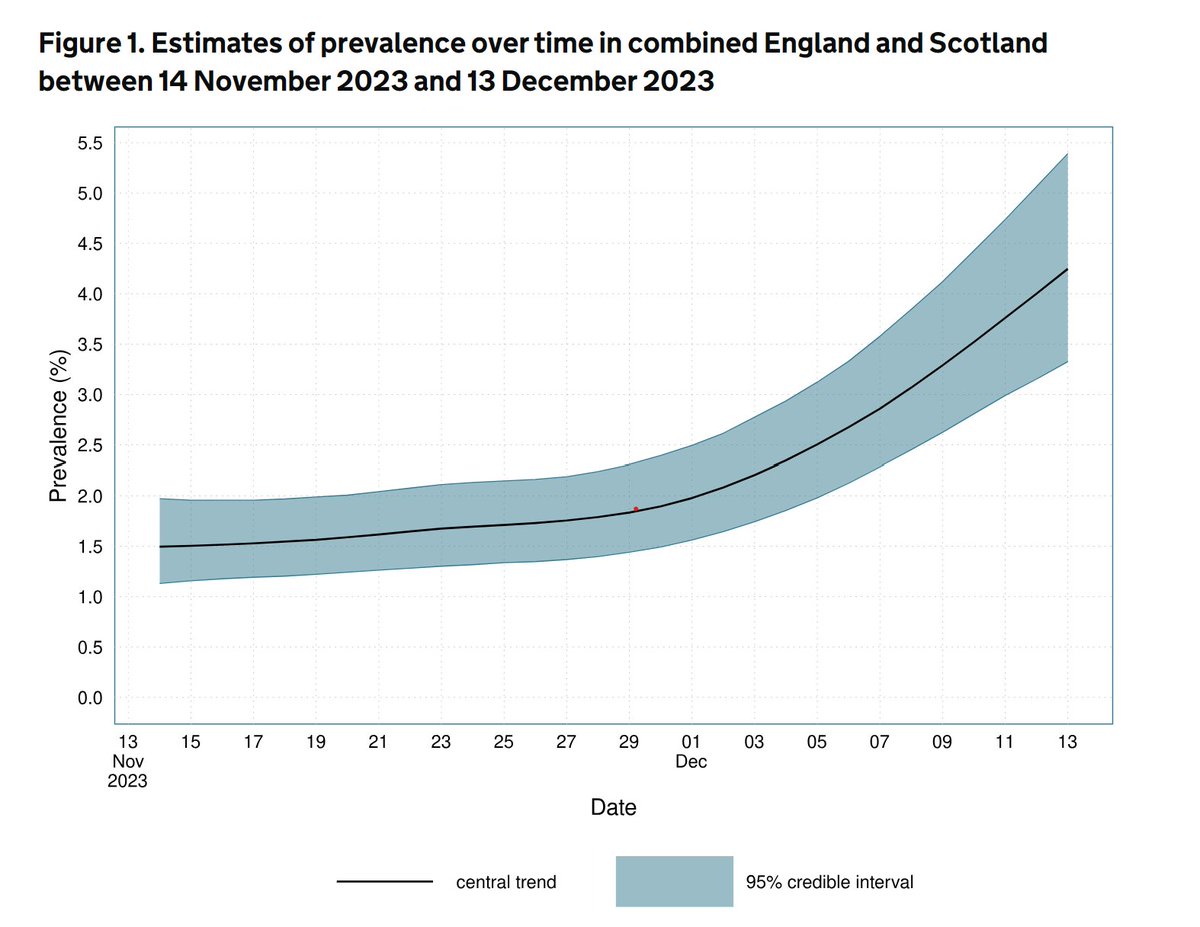The latest #REACT study (Round 17) confirms the rapid growth seen in other studies, tripling between R16 and 17 to 4.4%, the highest seen to date, with Omicron being 98% of samples.
Within R17, there's a clear sign of a fall though, with R put at 0.95, but varying by age.
1/
Within R17, there's a clear sign of a fall though, with R put at 0.95, but varying by age.
1/

That age variation can be seen here, with U17s still increasing through the round, whereas adults are showing clear declines.
2/
2/

Here's the history of these surveys, showing how R17 (5/1 to 20/1) is also around 3 times the rate at the peak of Alpha a year ago (R8). You can see the sample sizes too here if you're interested.
3/
3/

Talking of sampling sizes, a nice pictorial here of how many are asked to participate, through to how many positive cases were sequences. It's a massive exercise, and thanks to all at @imperialcollege and @IpsosMORI for their continuing efforts.
4/
4/

Back to the data - no surprises here in terms of Omicron's takeover, with 99% of those sequenced being that variant.
5/
5/

Snapshot of the age differences. Note at the far right that although the oldest ages are the lowest, they've increased proportionately much more. 12x in the case of the 70+ group.
6/
6/

Regional differences here, showing the NE as the highest during the round in contrast to R16, when London was highest. (The gap between rounds means the London peak seen elsewhere was missed.)
7/
7/

The regional variations are probably more obvious in these charts, showing the intense areas in the NW and NE, and generally the big cities having higher prevalence.
8/
8/

There are lots more data in the report, confirming some fairly intuitive findings, that household size (and no of children) impact prevalence rates, as do contact with someone infected, shielding status, and deprivation.
9/
9/

Curiously an early version of the report commented on how many of those positive had previously had COVID, (as picked up by the BBC here), but there's no reference to that now in either the report or the summary of the findings.
10/
bbc.co.uk/news/health-60…
10/
bbc.co.uk/news/health-60…
Finally, we'll shortly have the latest ONS flash summary taking its analysis up to around the same end point as Round 17, which as usual I'll provide a summary of.
REACT study here:-
spiral.imperial.ac.uk/handle/10044/1…
11/11
REACT study here:-
spiral.imperial.ac.uk/handle/10044/1…
11/11
The report has now been updated to include the missing reference mentioned above. If for every one positive who hadn't previously had confirmed COVID, two more are reinfections, that could be quite a dramatic increase in cases next week on the dashboard. 



• • •
Missing some Tweet in this thread? You can try to
force a refresh












